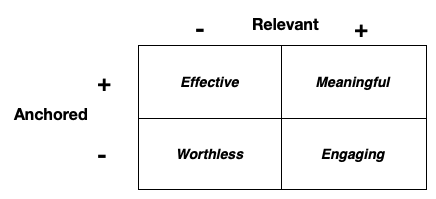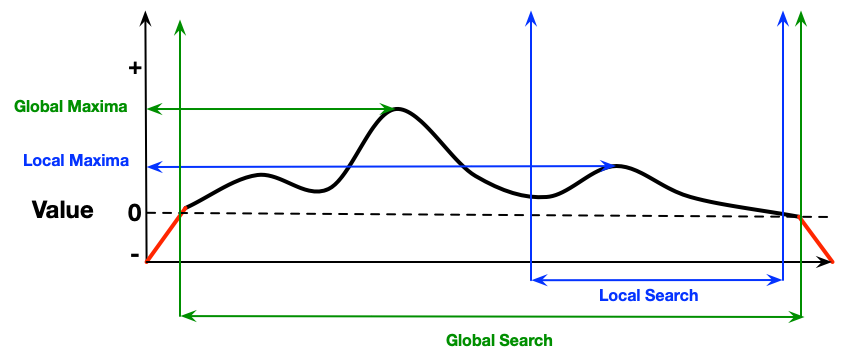In reviewing my forthcoming book on Make It Meaningful, I’m poring over my Education -Engagment Alignment (EEA). I’m rewriting part to revisit it. Which I’ve done, but in doing so I had a revelation. I’ve maintained that they’re independent elements. However, I now see Relevant and Anchored as complementary components.
‘Anchored’, in my terminology, is ensuring the learning outcome meets a real need. It’s about the relationship between the learning objective and the performance gap. If you’re trying to get better at something, for instance, the objective is specifically related. If you’re learning about dealing with customer objections, you’ve got a specific objective to use a particular approach. It is not ‘understand’ but ‘do’. You’re not anchoring if your root cause of the performance gap isn’t a lack of skill. If the learning covers information that’s ‘nice to know’, you’re not anchored. This is determined, by the way, by a performance consulting process.
‘Relevant’, again the way I term it, is about whether the learner cares about that learning objective. If learners don’t care about being a repair tech, having an objective about the problem-solving process can’t matter. This is something we should design into the experience. That is, we should be helping learners ‘get’ that the consequences of acquiring this skill matter to them. We can use curiosity, or consequences, or…but we should not leave it to chance!
Using the usual present/absent two-factor diagram, it looks like this:
That is, if you have neither the effort is worthless. Which is like a lot of what we see! When you’re anchoring, but not being relevant, the solution is likely to be moderately effective (tho’ not as much as it could be). People stay away if possible! If it’s relevant but not anchored, it’ll be engaging, but not effective and not meaningful. This is the typical tarted up stuff, aka well-produced but not well-designed and produced. However, if you get both in there, you’ve truly made it meaningful.
I suggest you want relevant and anchored. If we’re putting in the effort, we should be aligning both. I suggest LXD means the elegant integration of learning science with engagement. It sticks better! We know how to do this, reliably and repeatedly. Our learning doesn’t have to be dull nor ineffective, and we owe our learners this.



